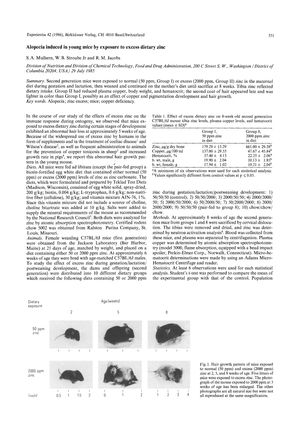TLDR Too much zinc in the diet can cause hair loss and color change in young mice by reducing copper in the body.
In the 1986 study, young mice were divided into two groups: Group I received a normal zinc diet (50 ppm) and Group II received an excess zinc diet (2000 ppm) from gestation until they were 8 weeks old. The results showed that the mice in Group II had lower plasma copper levels, body weight, and hematocrit values compared to Group I. Furthermore, Group II mice exhibited delayed and abnormal hair growth, with their second coat of hair appearing late and lighter in color. The most severe alopecia was observed at 5 weeks of age, with hair regrowth starting around 6 weeks but the color remained lighter. The study concluded that the alopecia and achromotrichia (loss of hair pigment) in the mice were likely due to a copper deficiency caused by the excess dietary zinc, as copper is crucial for pigmentation and hair growth. This suggests that high levels of dietary zinc can disrupt hair growth cycles by affecting copper absorption and utilization.
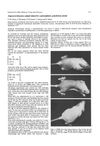 2 citations
,
September 1980 in “Experientia”
2 citations
,
September 1980 in “Experientia” Polyethylene alanine caused hair loss in young lab animals but not in adults, with hair regrowth occurring within 20 days.
13 citations
,
December 1977 in “Journal of Toxicology and Environmental Health” High levels of phenyl glycidyl ether vapor caused hair loss in rats.
23 citations
,
August 1975 in “Experimental Biology and Medicine” Copper supplements during pregnancy improve survival and development in mutant mice.
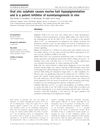 30 citations
,
June 2006 in “British journal of dermatology/British journal of dermatology, Supplement”
30 citations
,
June 2006 in “British journal of dermatology/British journal of dermatology, Supplement” Oral zinc sulphate reduces dark hair color in mice.
 June 2025 in “Clinical Cosmetic and Investigational Dermatology”
June 2025 in “Clinical Cosmetic and Investigational Dermatology” Gray hair can potentially be managed or reversed with treatments that boost melanin production and address nutritional deficiencies.
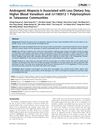 15 citations
,
December 2013
15 citations
,
December 2013 Men with more vanadium in their blood and who drink less soy milk are more likely to have hair loss.
6 citations
,
January 2019 in “Indian Journal of Pharmacology” Melitane 5% and hair supplements improved hair color in a 14-year-old with early graying.
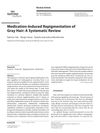 28 citations
,
December 2019 in “Skin appendage disorders”
28 citations
,
December 2019 in “Skin appendage disorders” Some medications might reverse gray hair, especially those that reduce inflammation or stimulate pigment production, and vitamin B might help.
